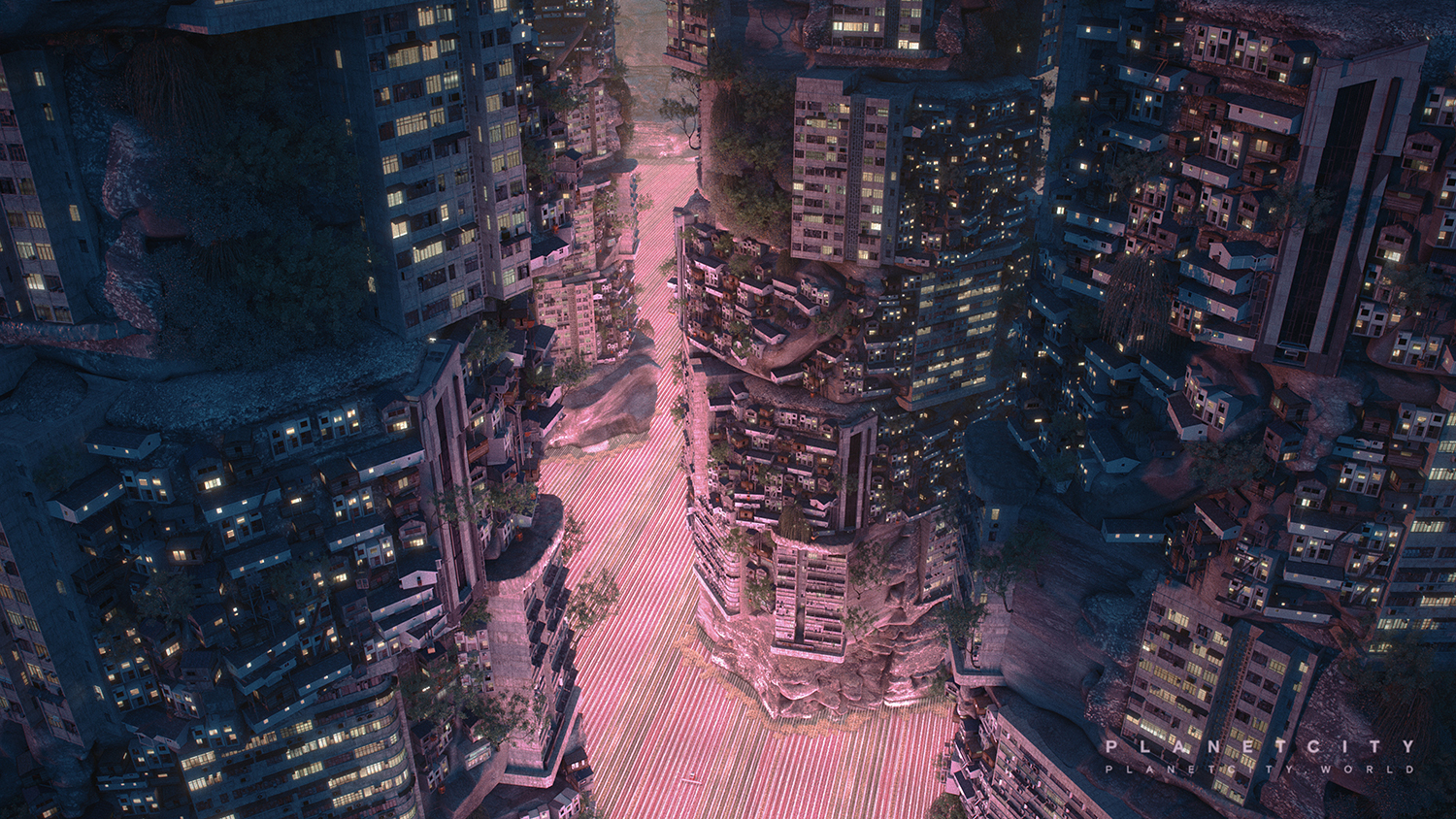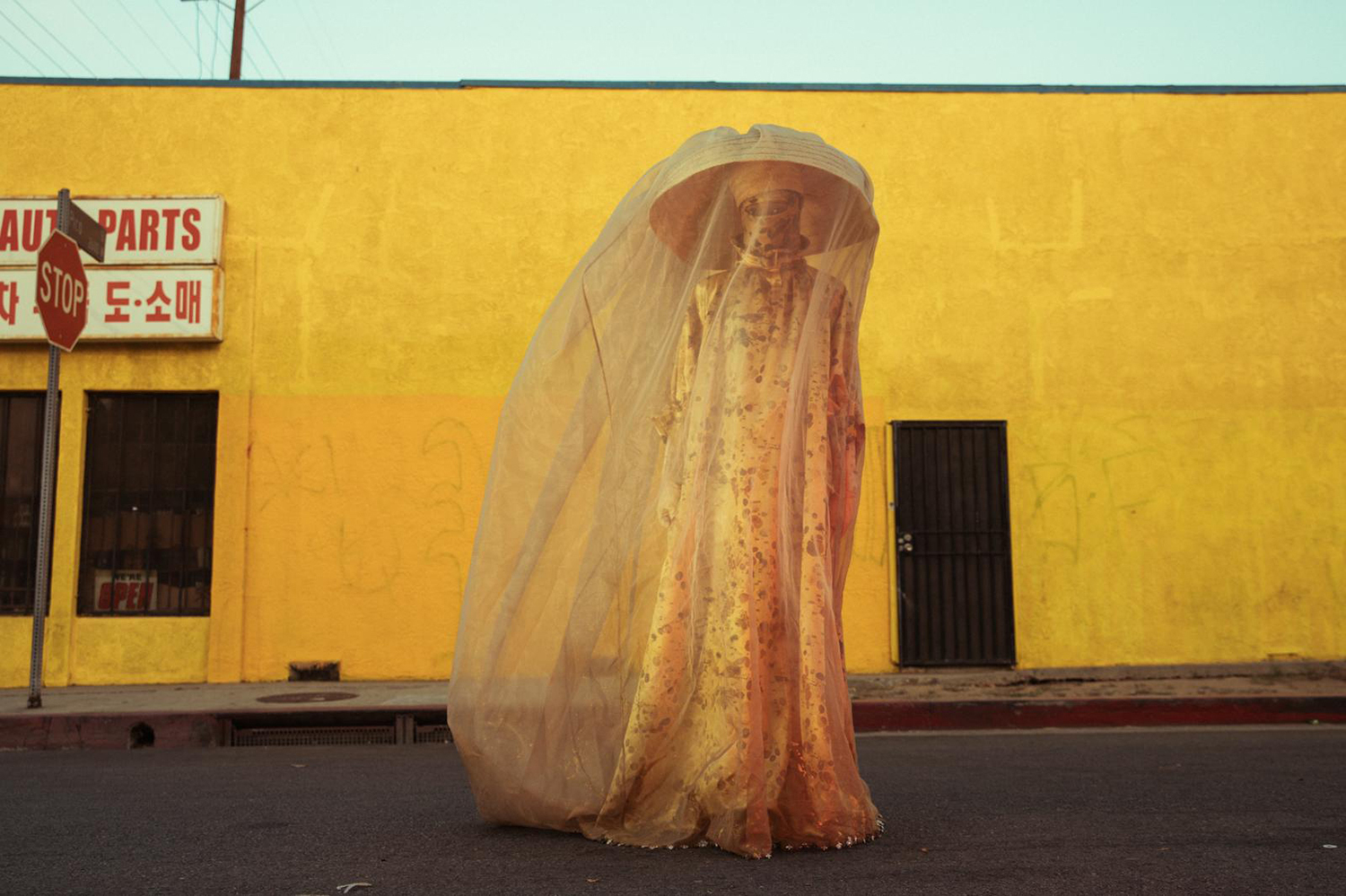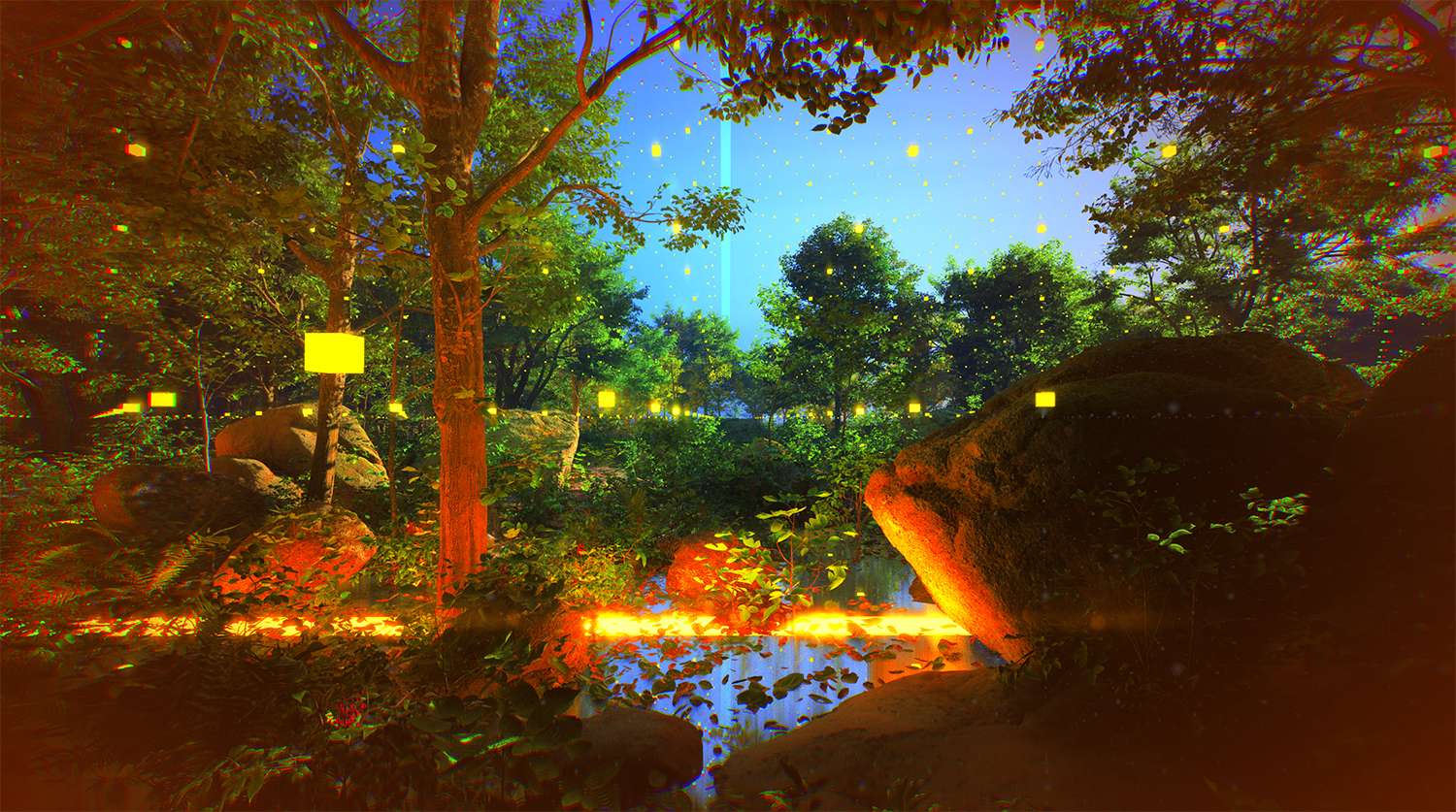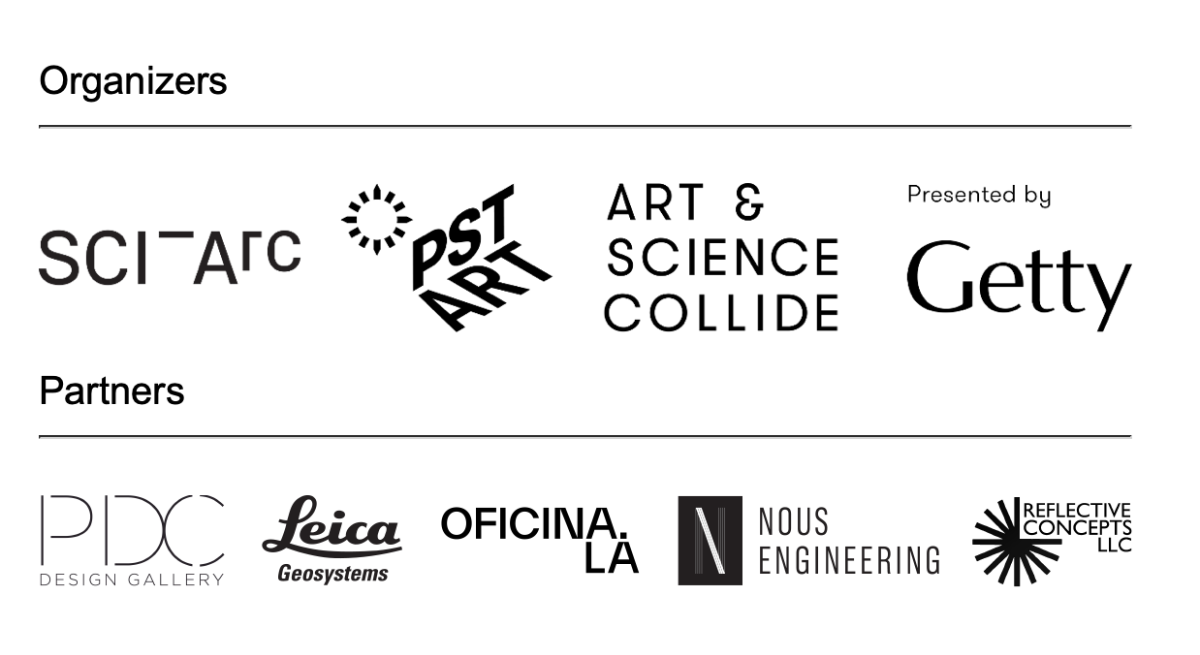Liam Young.

Pacific Design Center Gallery
September 13, 2024–January 26, 2025
Thursday–Sunday, 11am–5pm
SCI Arc Gallery
September 13, 2024–April 4, 2025
Monday–Friday, 10am–6pm, Saturday–Sunday, 12pm–6pm
Lead Curator: Liam Young
Exhibitors: Jennifer Chen, John Cooper, Damjan Jovanovic, and Angelica Lorenzi
Organizer: Namik Mackic
Exhibition Design: OFICINA.LA
For Getty’s PST ART: Art & Science Collide, SCI-Arc presents Views of Planet City—calling for a radical re-envisioning of a sustainable planetary future. Views of Planet City brings together five artists in an exploration of Liam Young’s Planet City: a vision of a future city for 10 billion people into which all of Earth’s human population has retreated, surrendering the remainder of the planet to a global-scaled wilderness and the return of stolen lands. Alongside Young, Jennifer Chen, John Cooper, Damjan Jovanovic, and Angelica Lorenzi construct a maze of perspectives on Planet City, examining it as a material phenomenon and a cultural event already in a process of becoming.
Liam Young’s worldbuilding project Planet City (2021–ongoing) investigates implications of biologist Edward O. Wilson’s “Half-Earth” proposal to remove at least 50% of our planet’s land and marine areas from human use and set them aside for preservation of the planet’s ecosystems and regeneration of biodiversity. Young’s vision takes this premise to an extreme: Humanity has agreed to retreat into a single city housing 10 billion people, the projected human population of Earth in 2050, delivering most of the Earth to a grand project of restoration.

Liam Young.
Spanning fiction and documentary films, video games, costumes, textiles, miniature models, installation, performance, and printed matter, Views of Planet City expands on Young’s imaginary world across a multiplicity of media to call for a radical re-envisioning of our common planetary future. Cityscapes reassembled to extreme density and multicultural vigor, dramatically reconfigured landscapes of production, synthetic ecosystems at a planetary scale, new social practices of recycling and scavenging from existing cities, and practices of communing with a planet in the process of rewilding: Views of Planet City weaves a vibrant image from trends and technologies already emerging in our present. The exhibition represents a collaborative effort of multiple voices and cultures supported by an international team of groundbreaking environmental scientists, theorists, and advisors. In Views of Planet City, we see that adequate responses to climate change no longer constitute a technological problem, but rather an ideological one, rooted in culture and politics.
Views of Planet City is a collective contemplation of choices and sacrifices humanity must make to cut the footprint of urbanization and confront global warming at the most daunting of scales. It proposes nothing less than a new planetary imaginary: a counterimage of sustainability that flies in the face of the dated environmentalist visions of the late 20th and early 21st centuries. Both an immersive, interactive experience and a conceptual blueprint for a sustainably urbanized planet, Views of Planet City is a project of radical optimism driven by cinematic sensibility and architectural thinking.

Damjan Jovanovic.
Views of Planet City has been coordinated by SCI-Arc's Research department 2020–2024, within the Getty Foundation’s initiative PST ART: Art & Science Collide 2024.

About PST ART:
PST ART is a groundbreaking cultural collaboration. Every five years, PST ART unites hundreds of artists around a single, electrifying theme at more than 60 exhibition spaces. While the theme is different each time, the heart of PST ART is always the distinctive cultural identity of Southern California, and the universal hunger for artistic and intellectual discovery. In a region famed for its films and theme parks, PST ART provides a different kind of gripping experience— and the most distinctively Southern Californian of all.
About the Exhibitors:
Liam Young is an Australian born architect who operates in the spaces between design, fiction, and futures. He is founder of the think tank Tomorrows Thoughts Today, a group whose work explores the possibilities of fantastic, speculative, and imaginary urbanisms. Building his design fictions from the realities of present, Young also co-runs the Unknown Fields Division, a nomadic research studio that travels on location shoots and expeditions to the ends of the earth to document emerging trends and uncover the weak signals of possible futures. He has been acclaimed in both mainstream and architectural media, including the BBC, NBC, Wired, Guardian, Time Magazine, and Dazed and Confused and his work has been collected by institutions such as the Metropolitan Museum of Art and the Victoria and Albert Museum. He has taught internationally including the Architectural Association and Princeton University and now runs an MA in Fiction and Entertainment at SCI-Arc. Young manages his time between exploring distant landscapes and visualizing the fictional worlds he extrapolates from them.
Jennifer Chen is an architect and designer who works at the intersection of science and fiction, exploring themes of geoengineering, remote sensing, and climate change futures in projects that take the form of buildings, installation, film, and performance. Chen’s designs for stage and screen include a speculative series of planetary scale post-climate animations, a collection of flying drone characters for the UK’s Channel 4 science fiction film In the Robot Skies, the sellout drone orchestra performance Loop 60hz at the Barbican Theatre in London, and the camouflage costumes for the laser scanned film Where the City Can’t See. Her work has also been supported by grants from organizations such as Google Artists and Machine Intelligence and the Getty Foundation. Prior to her speculative and research practice Chen has been a project leader for Heatherwick Studio and LAB Architecture delivering a range of built works from the small scale to the monumental. Chen has also extended her research into academic contexts, running award-winning design studios at institutions such as the Bartlett School of Architecture, SCI-Arc, and Leeds School of Architecture, and as a guest critic at universities in Australia, UK, and the US. Chen’s work has been published internationally and exhibited at galleries such as Tate Modern, Barcelona’s CCCB, the EYE Institute in Amsterdam, Telefonica Madrid, the Venice Biennale, and her first US solo show for the SCI-Arc Gallery.
John Cooper is History + Theory Faculty at SCI-Arc. Cooper’s work crosses investigative research, publication, performance, event design, and curating. ‘The Dancing Image’ (RES, 2020) analyzes the history of images of the body in states of extraordinary metamorphosis as prefigurations of anticolonial violence in 18th and 19th century India, England, and the Caribbean. ‘Curly Crown’ (with Mira Henry, Log, 2020) presents a deep history of LA street architecture through a conversation in movement. ‘Spirit Level’ (Party Planner, 2022), investigates the prefigurative power of model architecture in Jamaican street carnival of the 1830s. Cooper is currently working on histories of anarchism and architecture, and the future of expropriation and redistribution of architectural resources as part of the Getty Pacific Standard Time Planet Cityproject.
Damjan Jovanovic is co-founder of the Los Angeles-based game design studio Lifeforms.io and serves as faculty at SCI-Arc. He is an artist and designer working at the intersection of video games, artificial intelligence, and architecture. Jovanovic's work has been exhibited internationally, and his writings on design, games, and worldmaking have been featured in a range of established publications. He completed his Master of Arts in Architecture postgraduate degree at the Städelschule in Frankfurt, Germany, in 2014, at which he subsequently served as design faculty.
Angelica Lorenzi is an Italian architectural designer, educator and digital artist currently based in Los Angeles. Angelica holds an undergraduate degree from the University of Innsbruck and received a Master of Architecture with distinction from Die Angewandte, University of Applied Arts in Vienna, studio Hani Rashid in 2018. Angelica was selected for the exchange program at SCI-Arc in Los Angeles in 2016, she won the 1st prize for the European Active Public Space competition with the following realization of the urban prototype Kepos_cpdg in front of MAK Museum in Vienna. She is currently a Design Studio faculty at SCI-Arc at the undergraduate and graduate levels. Angelica’s work has been exhibited in various international Exhibitions, such as the TAB Tallin Architectural Biennale 2017, Vienna Biennale 2017, Venice Architecture Biennale 2016, Architekturtage Innsbruck 2016, among others.